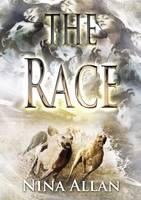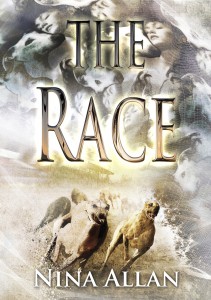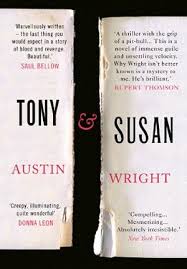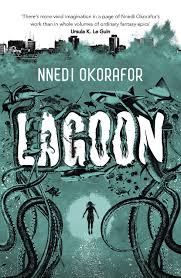Nominations for this year’s BSFA Awards close on January 31st. In order for the awards to be truly representative of what’s going on in science fiction right now, we need as many people who are eligible to nominate, to nominate. Even if there’s just one SF novel you read last year that you feel passionate about, nominate that. If you’re a member of the BSFA, or a member of this year’s Eastercon, get your nominations in before the deadline here!
I haven’t decided on my final BSFA ballot quite yet. There are a couple more books I’m hoping to get read before the deadline (including this one – guess who purloined my copy!) I am still reading 2014 short fiction. too, and it’s short fiction I want to concentrate on in this post. I’ve felt quite depressed in recent years, looking at short fiction awards shortlists which have tended to privilege, again and again, a same few overhyped stories (some of them excellent, but that’s not the point) at the expense of – well, variety, urgency, originality, bizarreness. I can also point to myself as part of the problem – I haven’t been reading anywhere near enough short fiction, which means firstly that I’ve been missing out and secondly that I’ve been over-reliant on the recommendations of other, more valiant souls who I’ve been depending on to do the spadework for me.
The constant refrain at the moment is that there is now so much short fiction published each year that no one has a hope of keeping up with it all. While it is undoubtedly true that the annual volume of short fiction now makes a comprehensive overview an ideal rather than an obtainable reality, I’ve noticed a dismaying trend recently to meet the impossibility of forming an objective judgement with a round dismissal of everything that’s out there.
I understand this reflex, believe me. What often makes me uneasy about the state of SFF short fiction is not so much the content but the context. I find magazines and anthologies difficult – all too often there’s that rag-bag effect that runs the danger of levelling everything down to a kind of flavourless mush – and I actually prefer reading short fiction within the context of a single-author collection, where you can gain a better sense of the writer’s overall purpose and character. On the other hand, SFF is unique in offering a level literary playing field within the short fiction market and whatever the inherent problems, our magazine heritage, wherein new writers can and do regularly share ToC space with masters of the field, should not be discarded or denigrated lightly. Rather, this evolving democracy is something we should be proud of, and celebrate.
Just before Christmas I had an epiphany: what if every BSFA Awards voter (and Hugo voter) were to read just twenty pieces of new short fiction every year? Surely this would have at least some impact, not just upon individuals’ knowledge of the field but on their sense of investment in the awards process. Whether through random online reading (one of the most radical advancements in the field in recent years has been the increasing quality and availability of free short fiction online) or through the purchase of magazine subscriptions would be down to individual inclination and cash available, but I honestly do think the twenty-shorts-per-year formula would have a considerable effect on the discourse around short fiction.
Why not try it and see? It’s certainly what I’m going to be doing from now on. I would hope to read a whole lot more than twenty new stories, but I’m setting that as a lower boundary and intend to stick to it, both in the current year and beyond.
For now, I would like to share my thoughts on some of the 2014 short fiction that has caught my attention. One thing that is certain: the field is very far from dead, and with a more informed and passionate discussion we can all help to make it even more exciting. Here goes then with my recommendations to date and in no particular order:
SHORT STORIES
‘The Innocence of a Place’ by Margaret Ronald (Strange Horizons). One of my year’s favourites, this story about an investigation into the disappearance of a group of young women kept reminding me of one of my favourite films, Peter Weir’s Picnic at Hanging Rock. I loved the ‘true crime’ style, something I’m really into at the moment, combined with the personal insights of the narrator. Very much recommended.
‘Never the Same’ by Polenth Blake (Strange Horizons). A woman outcast from her community looks for ways to save it. I liked the narrative voice of this story so much I immediately looked for more fiction by the same author. I found ‘On Shine Wings’ at the Journal of Unlikely Entomology and was not disappointed. This story also features a beautiful illustration by the author, and be sure to check out the interview with Polenth Blake here.
‘Autodidact‘ by Benjanun Sriduangkaew (Clarkesworld). Another favourite. ‘On Srisunthorn Station, the corpses of conquered stars are nurtured into ships.’ A survivor of genocide learns to bond with one of these world-ships – but where does her unusual talent really stem from? What I admire most about Sriduangkaew’s work is her own unusual talent for bonding quite spectacular feats of linguistic invention with hi-tech science fictional concepts. Her approach to space opera and urban fantasy is so refreshingly word-based, so tactile. The worlds she creates are harsh – what tenderness there is, is ultimately to be found in the language. You might also like ‘When We Harvested the Nacre-Rice‘ (Solaris Rising 3)
‘Ogres of East Africa’ by Sofia Samatar (Long Hidden). Another brilliant story from Sofia Samatar. ‘Ogres’ is presented in the form of a series of catalogue entries on the ogres of East Africa, with another story entirely unfolding in the notes scribbled in the margins by the catalogue’s complier. Equally powerful is Samatar’s future dystopia ‘How to Get Back to the Forest’ (Lightspeed) which revisits some of the concerns voiced in ‘Selkie Stories are for Losers’, although this is a very different story.
”Help Me Follow my Sister into the Land of the Dead’ by Carmen Maria Machado (Help Fund My Robot Army). I enjoyed this story so much. It’s presented in the form of a Kickstarter campaign, with accompanying user comments and FAQs. Humour, horror and great sadness, inventively portrayed. I love stories that do things with form and I love Machado’s writing.
‘The Eleven Holy Numbers of the Mechanical Soul’ by Maria Theodoridou (Clarkesworld). I encountered this story while blogging the Mammoth Book of SF Stories by Women, and was struck by its technical accomplishment and use of actual science. I have to commend the author’s courage in bringing us a story that is almost one-hundred percent pure bleakness. This is a story that’s stayed with me. Genuinely original and throught-provoking.
‘The Hymn of Ordeal, No 23’ by Rhiannon Rasmussen (Lightspeed). One of those occasions where you fall completely in love with a story for its imagery and language. A war involving millions condensed into a prose-poem about a brother and sister. There’s stuff here that reminds me of the worlds conjured in Benjanun Sriduangkaew’s stories. You can read this in fewer than ten minutes, but this story’s power will remain with you far longer.
‘A Dweller in Amenty’ by Genevieve Valentine (Nightmare Magazine).
‘You’d think some sins would taste heady, forbidden. Worth it. An affair would be sharply sweet, a murder would taste of panic and lurching triumph, a lie would taste like escape, or spring.
If it did, there would be more of us.
A love affair is stale breath. A murder is sweat. A lie is a fingernail of dirt.’
I’ve been a fan of Genevieve Valentine ever since reading her debut novel, the marvellous Mechanique, and ‘A Dweller in Amenty’ is a powerful little horror story indeed. Based around the legend of the Sin Eater, the dubiously ‘gifted’ individual tasked with taking upon themselves the sins of the deceased in order that their cleansed souls can progress to the afterworld, this is what character-driven horror is all about. The narrator of this story could sustain a whole novel, easily.
‘The Mao Ghost’ by Chen Qiufan (Lightspeed). Ken Liu has done powerful things with the translation here, subtly conveying to non-Chinese speakers such as myself how a single word might carry several meanings, depending on intonation and context. This is a powerful story about a young girl coming to terms with the fact that her father is dying, and learning about what her parents’ generation went through during Mao’s Cultural Revolution. Also cats. This left me eager to read Chen Qiufan’s first novel in English translation, The Waste Tide. Ken Liu describes this as ‘a cyberpunk thriller set in China’s e-waste processing hub’. (Slated for release this year, apparently – I can’t wait.) Check out the author spotlight with Chen Qiufan here, and while you’re at it, do please read Ken Liu’s essay on Chinese SF, ‘China Dreams’, here.
‘One Day I Will Die on Mars’ by Paul Ford (Terraform). An ultra-short snapshot of a future where one particularly rapacious company controls all business – and through that, personal – life in New York and by implication the world. It’s horrific, humorous and prescient all at the same time. Packs a lot into a small space and well worth a read.
‘Targeted Strike 2: Judgement Database’ by Adam Rothstein (Terraform). Another ultra-short, smart piece, this time about censorship, violence and the exercise of power. I particularly liked the cut-up narrative style of this one, and again, there’s a savage amount of content conveyed in a relatively few words. Doesn’t seem right to call this enjoyable but it is.
‘The Damaged’ by Bonnie Jo Stufflebeam (Interzone). An original and beautifully written take on the Frankenstein archetype, ‘The Damaged’ tells the story of Robin Kirkland, a bio-technician who works for a corporation that specializes in the production of AIs known as Playmatez. A playmate is designed to fulfil its owner’s wishes in every conceivable way. Only some of them come out damaged. Robin, damaged in her own way from the fallout of a failed relationship, becomes obsessed with finding out why. There’s a Bladerunner vibe to this story, which contains enough interesting material to fill a novel.
‘Black Paintings’ by James Smythe (Jurassic). This story, inspired by the titular Black Paintings by Goya, utilizes only the barest traces of the speculative, and tends more towards horror than SF, but I found it so good I had to include it. Its amoral businessman protagonist reminded me uncannily of John Law, the antihero of Tobias Hill’s 2004 near-future quasi-thriller The Cryptographer.
‘Popular Images from the First Manned Mission to Enceladus’ by Alex Dally MacFarlane (Solaris Rising 3). What you’d call a ‘list story’ creating its narrative through a number of individually detailed snapshots of a future journey into space. MacFarlane is shaping up to be a very fine writer, boldly inventive in her use of both language and form. You may also enjoy her lushly evocative ‘Because I Prayed this Word’ (Strange Horizons) and another of her distinctive list stories, ‘Pocket Atlas of Planets’ at Interfictions Online.
‘Storytelling for the Night Clerk’ by JY Yang (Strange Horizons). A short and beautifully evocative piece, set in the future. Memories are a precious commodity, but who gets to choose whose memories are preserved for the rest of us? I especially loved the way this story shifted focus at the end.
‘The Final Girl’ by Shira Lipkin (Strange Horizons). A short piece that explores similar territory to Daryl Gregory’s short novel We Are All Completely Fine, also out this year. I admired Shira Lipkin’s sideways approach to a story in her contribution to The Mammoth Book of SF Stories by Women, and I admire it again here. A nice piece of work.
‘The Fisher Queen‘ by Alyssa Wong (F&SF). A story of mermaids, and family history, and the Mekong river. It bites. I loved this from the first sentence. Superb.
NOVELETTES
‘The Devil in America’ by Kai Ashante Wilson (tor.com). If you only have time for one piece of new short fiction this month, please make it this one. A stunning piece of writing, ‘The Devil in America’ explores issues of racism, community, belief and spiritual heritage in post-Civil War America. It’s a riveting read. I hesitate to use the word ‘magical’ to describe a work that had me in tears at the brutality of the events portrayed, but that’s what it is. It’s not just about the past, either, as some recent events in America have shown. For me personally, the little touches of meta-fiction in the form of ‘tutor’s notes’ lifted this story even higher. For clearer insights and more information about this story, do read this interview with Kai Ashante Wilson at Rochita Loenen Ruiz’s books blog. (And Mr Wilson, please write us some more stories. Write a novel.)
‘A Litany of Earth‘ by Ruthanna Emrys (tor.com). How lovely to see the Cthulhu mythos turned on its head! Aphra Marsh is one of the few who survived the state action to purge the town of Innsmouth of its Elder families… Now, living what passes for a normal life in 1950s America, she is doing her best to remain unobtrusive and to put the worst of her memories behind her. But FBI agent Ron Spector has other ideas… This is a beautifully written piece of alt-mythos that is solidly entertaining as story and a deft piece of social (and literary) comment to boot. I enjoyed it a lot.
‘The 4th Domain’ by M. John Harrison (Kindle Single). Vintage MJH, simply stunning. If you liked The Course of the Heart you’ll love this. End-times London, end-times narrator, seriously disturbed people. Rotting canal barges. Oh, and there’s some mythos-y-type stuff here, too, if you want to read it that way. Whichever way you read it, it’s a gem.
‘Reborn’ by Ken Liu (tor.com). This story is more ‘out there’ science fictionally than others I’ve read by Liu, and I liked it a lot. Liu’s style relies quite heavily on exposition, but there’s no harm in that when his stories are as compulsively readable as they are. ‘Reborn’ is a very deft story about colonization, and the ownership of one’s own memories and actions, be they good or bad. There are plenty of ideas in here, but the story also feels exciting to read, in a classic SF-thriller kind of way. Makes me eager to read Liu’s debut novel The Grace of Kings, which is due for release in April. You may very well also enjoy Liu’s alt-history short story ‘The Long Haul’, which explores some related themes in a different way.
NOVELLAS
The Beauty by Aliya Whiteley (Unsung Stories). This is what I mean about works that get overlooked. Many more people should be talking about this novella. One of the most original and downright weird pieces of fiction I’ve read in ages, The Beauty is the story of what happens to men when women disappear from the world, victims of a mysterious fungal infection that leaves the surviving males aware that they will be the last of their kind. The novella focuses upon a small group, living as an alternative community in the Valley of the Rocks in North Devon. Our narrator, Nathan, is the community’s bard. He tells them stories about themselves, about the women they’ve lost, about the world as it was and will be. When that world begins to change in a manner not one of them could have imagined, he must chronicle that, too. Whiteley’s considerable skill as a writer is fully on display here – her language is simple but perfectly poised, there’s a kind of mythic reach, an oral history feel to it that brings it close to song. The story itself is simple too – and yet so complex, so layered and so ambiguous that it would take many pages to unpack it adequately. This novella should win stuff. Seriously, just read it. Original work is being done. Here’s proof.
Dream Houses by Genevieve Valentine (Wyrm). It seems I have a thing for doomed spaceship stories at the moment because I thought this was wonderful. Reminded me a lot of Caitlin R. Kiernan’s The Dry Salvages, which I read and loved in the autumn. Also Alien, although in this case the threat is more cousin-to-HAL than xenomorph. Amadis Reyes wakes from deep sleep aboard the Menkalinan. The rest of the crew are dead, she’s a full five years away from the ship’s pre-programmed destination, with insufficient supplies. Something is very wrong. This is a tense, compelling read, gorgeously written.
Scale-Bright by Benjanun Sriduangkaew (Immersion). If anything, Sriduangkaew’s use of language here is even more luxuriously dense and textured than in the two short stories I mentioned above. An urban fantasy different from any you’ll read this year, Scale-Bright is set in a Hong Kong where reality may reinvent itself in a second, and where ancient enmities between mythical beings are being fought out under the noses of the mortals who go unknowing about their daily business. Julienne is caught between those worlds – as well she might be, when her aunts are goddesses. The colours flare off the page. Like poetry, the text is intuited first through the senses, and only then understood through the lens of reason. Just superb writing.
The Last Log of the Lacrimosa by Alastair Reynolds (Subterranean). This novella is actually a fascinating counterpart to Dream Houses. With its classic SF vibe, it’s highly entertaining and the kind of story that reminds me of why I started reading science fiction in the first place. A shuttle has crash-landed on a more or less deserted ice-planet. Three adventurers (and a monkey – don’t forget the monkey because it’s important) answer a distress signal… Sounding familiar yet? Reminded me in every good way of Reynolds’s earlier novella Diamond Dogs, which was the first piece I read by him. Just the thing for a winter evening. (I was convinced they’d feed the captain to the Borg-monster at the end, though. Seriously.)
I’ve very much enjoyed immersing myself in short fiction these past couple of weeks, and I’ll be looking forward to seeing other people’s recommendations and ballots as Hugo season approaches.
In the meantime, don’t forget to nominate for the BSFA!
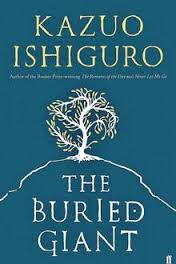 Most people with even a passing interest in what we care to call the politics of genre will have been aware of the recent pseudo-spat between Ursula Le Guin and Kazuo Ishiguro. I say pseudo-spat because that’s exactly what it was. Le Guin reacted to something Ishiguro never said, or rather, he didn’t say it in quite the way she thought he meant it (he explains himself here). Two days later she apologises for any offence she might have caused, and then admonishes Ishiguro for taking her own words in vain. “Many sites on the Internet were quick to pick up my blog post, describing it as an “attack”, a “slam”, etc,” she says. “They were hot on the scent for blood, hoping for a feud. I wonder how many will pick up this one?”
Most people with even a passing interest in what we care to call the politics of genre will have been aware of the recent pseudo-spat between Ursula Le Guin and Kazuo Ishiguro. I say pseudo-spat because that’s exactly what it was. Le Guin reacted to something Ishiguro never said, or rather, he didn’t say it in quite the way she thought he meant it (he explains himself here). Two days later she apologises for any offence she might have caused, and then admonishes Ishiguro for taking her own words in vain. “Many sites on the Internet were quick to pick up my blog post, describing it as an “attack”, a “slam”, etc,” she says. “They were hot on the scent for blood, hoping for a feud. I wonder how many will pick up this one?”